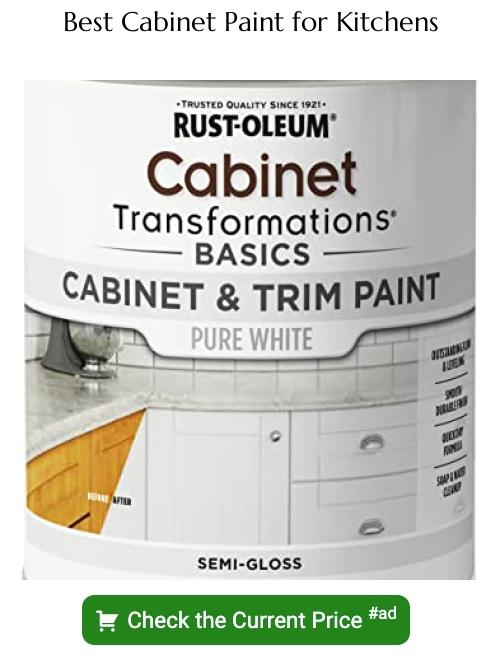Last updated on
Discover the perfect color to paint your kitchen cabinets that will beautifully complement your dark countertops, creating a stunning and harmonious space for all.
Are you looking to give your kitchen a fresh new look? One of the most impactful changes you can make is painting your cabinets. But with so many color options available, it can be overwhelming to choose the perfect shade.
Especially when you have dark countertops that need to complement the cabinets. Don’t worry, though – we’ve got you covered! In this article, we’ll guide you through some of the best color choices for kitchen cabinets with dark countertops.
So grab a cup of coffee and let’s get started!
What's Inside
Identifying Dark Countertops
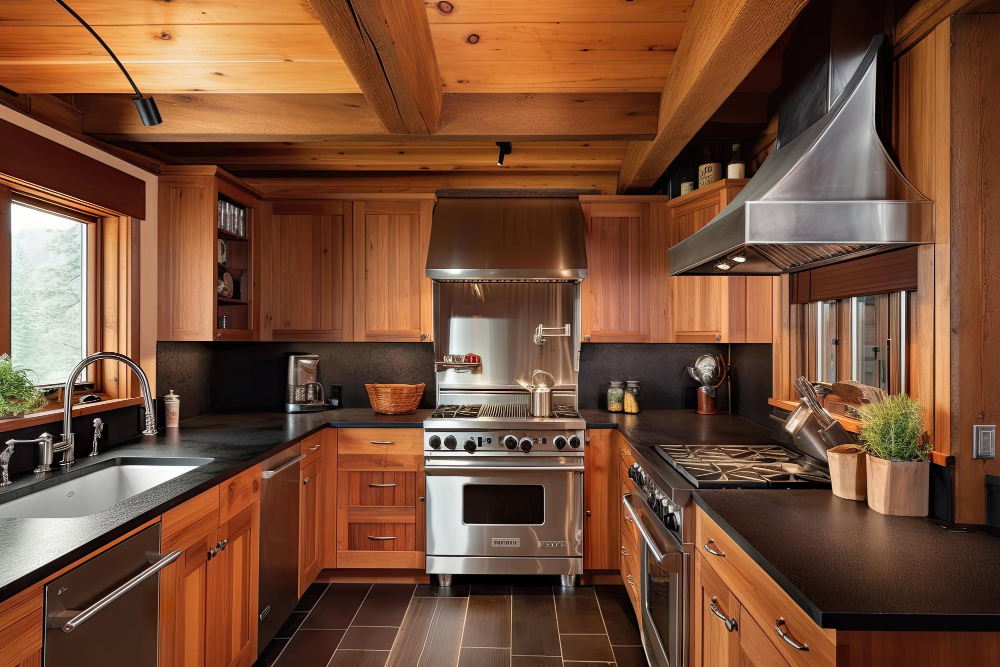
Generally speaking, countertops that are black or shades of gray fall under this category. However, some brown and green tones can also be considered dark depending on their depth and saturation.
To determine if your countertops are considered “dark,” take note of how much light they absorb compared to reflect. If you find that your counters tend to look shadowy even in well-lit areas, then chances are they’re on the darker side.
Color Theory Basics
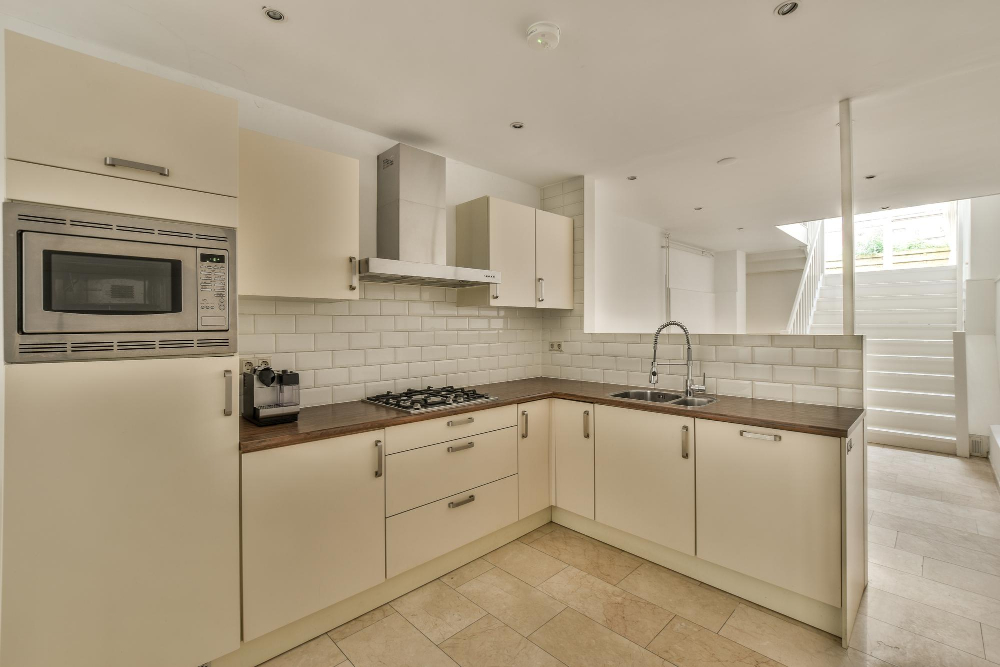
Understanding how colors work together will help you make informed decisions when it comes to choosing the perfect shade.
The three primary colors are red, blue, and yellow. These colors cannot be created by mixing other hues together.
Secondary colors are made by combining two primary shades: green (blue + yellow), orange (red + yellow), and purple (red + blue).
When selecting a cabinet color that complements your dark countertops, consider using complementary or contrasting hues on the opposite side of the color wheel from your countertop shade. For example, if you have black granite counters with gray veining throughout them – which is a cool-toned hue – warm-toned cabinetry in beige or cream would create an eye-catching contrast.
Complementing Dark Countertops
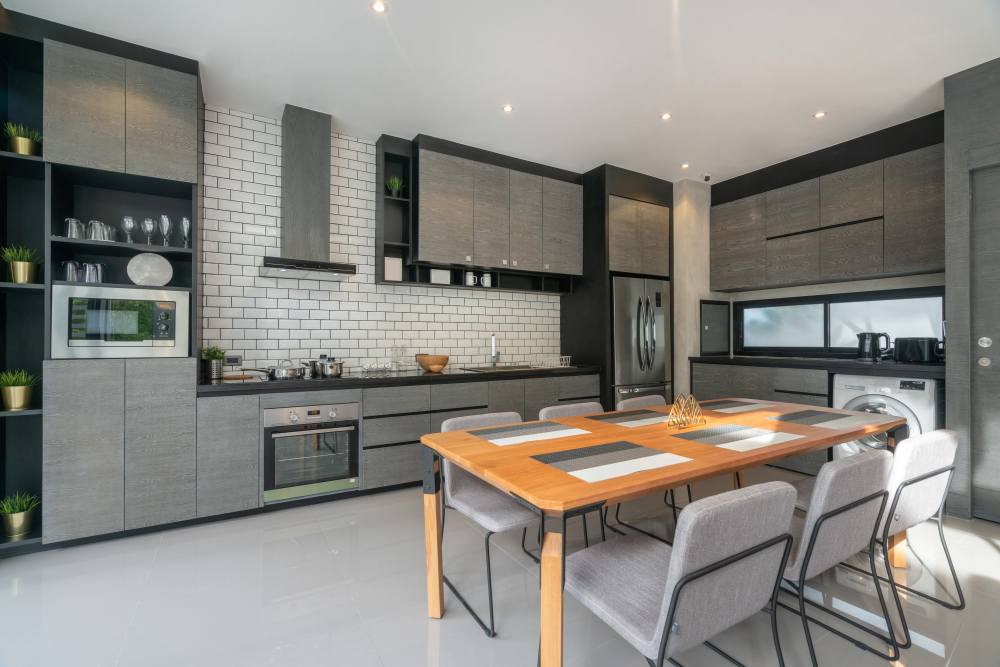
The right color choice can enhance the beauty of your countertops and create a cohesive look in your kitchen.
One way to complement dark countertops is by selecting neutral colors such as white, beige or gray. These colors are timeless and versatile, making them an excellent choice for any style of kitchen.
They also provide a clean backdrop that allows other elements in the room to stand out.
Another option is warm-colored cabinets like cream or light brown shades which add warmth and depth while still keeping things light enough not to overpower darker counters.
Cooler tones like blue-gray or green-gray can also work well with darker counters if you’re looking for something more unique than neutrals but still want something subtle enough not clash with bold patterns on granite surfaces.
Neutral Color Choices

When paired with dark countertops, neutral shades can create an elegant and sophisticated space that is both warm and inviting. Some of the best neutral color choices for kitchen cabinets include white, beige, gray, taupe or cream.
White is always a classic option that pairs well with any countertop color. It creates an airy feel in the room while also making it appear larger than it actually is.
Beige offers warmth to your space without being too bold or overpowering while gray provides depth and sophistication to your cabinetry.
Taupe has become increasingly popular in recent years due to its ability to blend seamlessly into any design style from traditional to modern farmhouse aesthetics. Creamy off-white hues like ivory or antique white add warmth without being too stark against darker countertops.
Warm Color Options
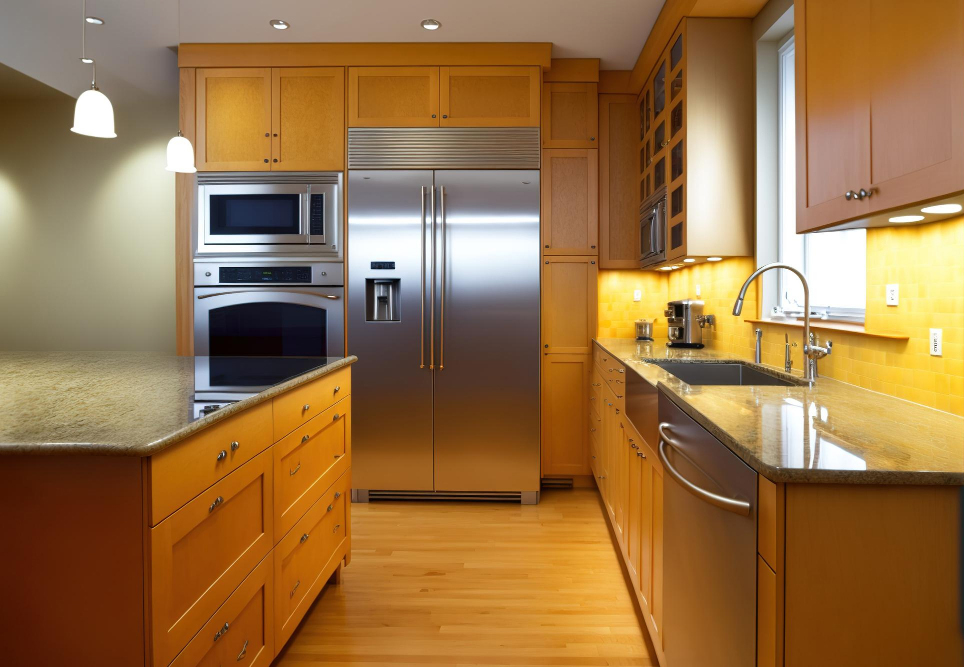
They create a cozy and inviting atmosphere, making your kitchen feel like the heart of your home. Warm colors include shades of red, orange, and yellow.
If you want to add some drama to your space while still keeping it warm and welcoming, consider painting your cabinets in a deep shade of red or burgundy. These rich hues pair beautifully with dark countertops such as black granite or soapstone.
For those who prefer lighter tones but still want warmth in their kitchen design scheme can opt for soft yellows or creamy oranges that will complement darker counters without overpowering them.
When choosing warm color options for your cabinets, keep in mind the size of the room as well as lighting conditions. Darker shades may make smaller kitchens feel cramped while lighter ones can help open up space visually.
Cool Color Selections
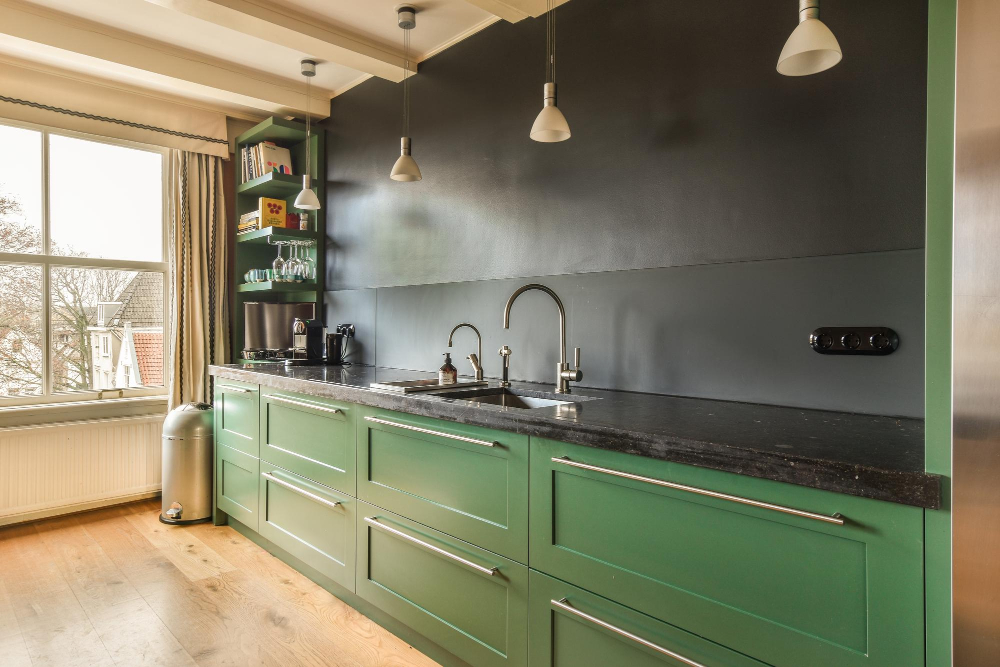
These hues include blues, greens, and purples. They create a calming and soothing atmosphere in the kitchen while also providing a refreshing pop of color.
For example, navy blue is an excellent choice for those who want to add depth and sophistication to their space. It pairs beautifully with black or gray countertops and creates a timeless look that will never go out of style.
If you’re looking for something more unique, consider shades like sage green or lavender purple. These cool tones can bring an unexpected twist to your kitchen design while still complementing your dark countertops perfectly.
When choosing cool colors for your cabinets, it’s essential to keep in mind the overall mood you want to create in your space. Cool tones work best when paired with other elements that enhance their calming effect such as natural wood accents or white walls.
Contrasting Colors
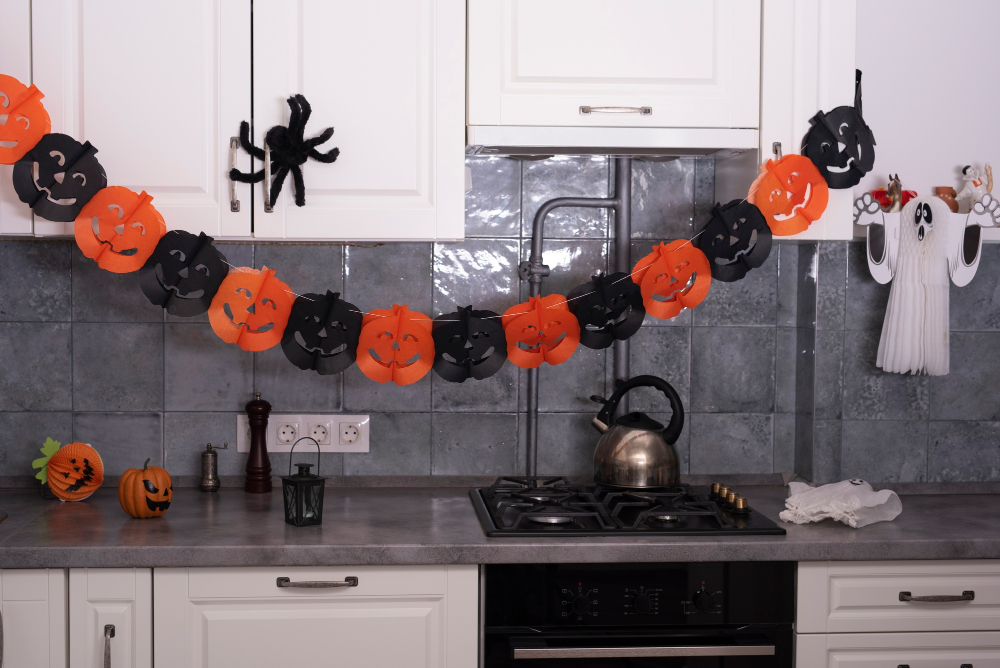
Pairing dark countertops with light-colored cabinets creates an eye-catching contrast that can really elevate the look of your space. White or off-white cabinets are classic choices for this type of color scheme, but don’t be afraid to experiment with other shades like pale blue or gray.
On the other hand, if you have lighter countertops and want them to stand out more, consider painting your cabinets a darker shade. Dark navy blue or forest green can create a striking contrast against white marble or quartz countertops.
When using contrasting colors in your kitchen design, it’s important not to overdo it – too many bold hues can quickly become overwhelming and chaotic. Stick with one main contrasting color pairing and use neutral tones for any additional elements like backsplashes or flooring.
Remember that while contrasting colors add visual interest and drama to a space, they may not work well in every kitchen style.
Complementary Colors
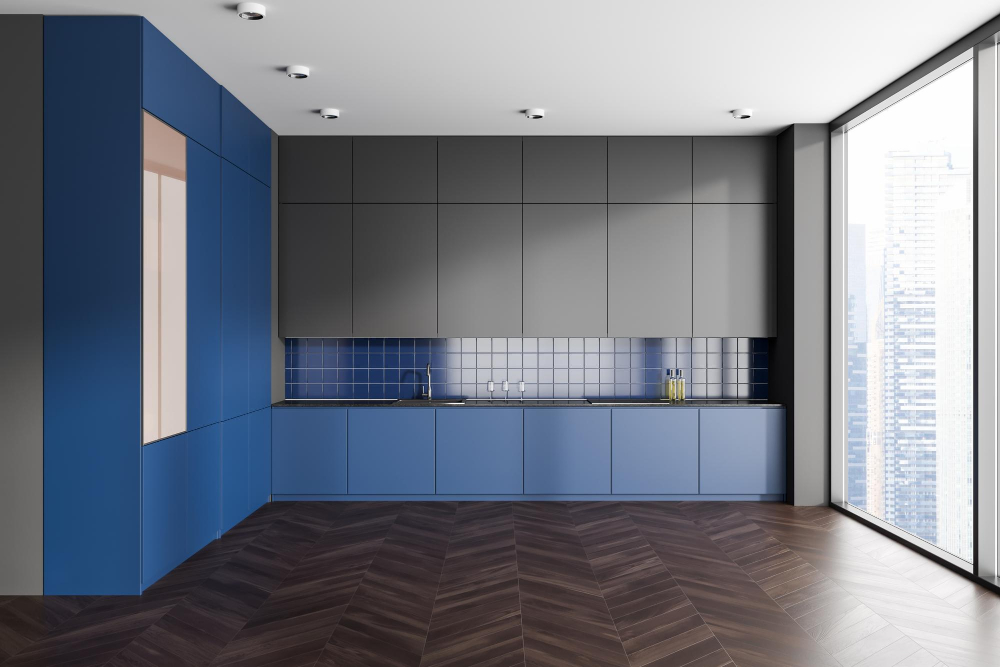
When used together, they create a striking contrast that can make your kitchen cabinets and dark countertops pop. For instance, if you have black or dark gray countertops, consider painting your cabinets in a shade of light blue or green to create an eye-catching look.
However, it’s important to use complementary colors sparingly as too much contrast can be overwhelming and visually jarring. A good rule of thumb is to use one complementary color as an accent while keeping the rest of the palette neutral.
When choosing complementary colors for your kitchen cabinets with dark countertops, keep in mind that warm tones like reds and oranges will add energy and vibrancy while cool tones like blues and greens will bring calmness and serenity into space.
Monochromatic Schemes
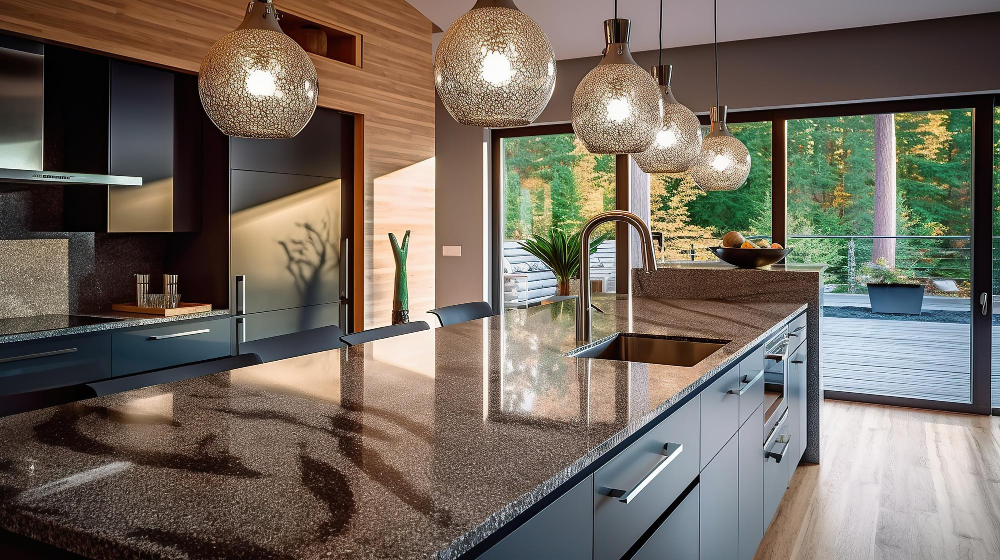
This color scheme involves using different shades of the same color to create depth and interest in your kitchen. For example, if you have dark countertops, consider painting your cabinets a lighter shade of the same hue.
This will create a cohesive look that is both elegant and sophisticated.
When choosing colors for a monochromatic scheme, it’s important to pay attention to undertones. If your countertops have warm undertones like yellow or orange, choose cabinet colors with similar warm tones such as beige or cream.
On the other hand, if your countertops have cool undertones like blue or greenish-gray hues then opt for cooler-toned cabinets such as light gray.
Remember that when working with monochromatic schemes it’s all about creating contrast through texture rather than relying on bold pops of color so be sure to mix up textures by incorporating materials like wood grain finishes on cabinetry doors or adding metallic accents throughout space.
Using Color Psychology
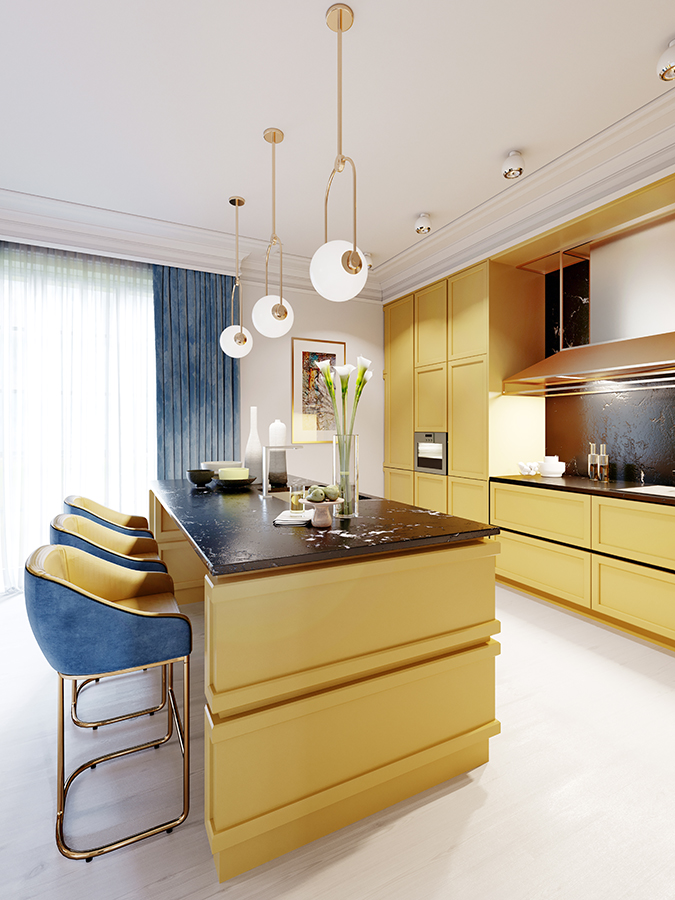
Colors have a significant impact on our emotions and moods, so it’s essential to consider this when selecting a paint color. For example, warm colors like reds and oranges can stimulate appetite and create an inviting atmosphere in the kitchen.
On the other hand, cool colors such as blues and greens promote calmness and relaxation.
If you want to create a cozy ambiance in your kitchen, consider using earthy tones like browns or beiges that evoke warmth. If you’re looking for something more vibrant but still welcoming, try yellow or orange hues that are known to increase energy levels.
It’s also important to keep in mind how much natural light enters your space since lighting affects how we perceive color. A room with limited natural light may benefit from lighter shades of paint while brighter spaces could handle bolder choices.
Balancing Dark and Light
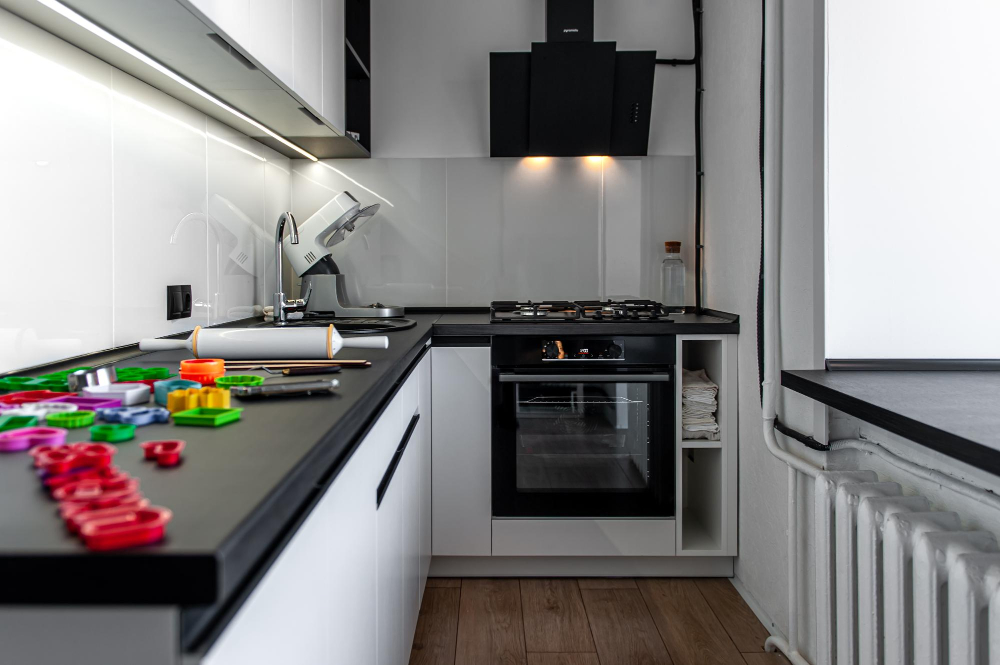
If you have dark countertops, pairing them with too-dark cabinets can make your space feel small and cramped. On the other hand, if you choose a shade that is too light or bright, it may clash with your countertops.
To achieve balance in your kitchen design, consider using lighter shades of paint on upper cabinets while opting for darker hues on lower ones. This technique creates an illusion of height by drawing the eye upward towards brighter colors.
Another way to create balance is by incorporating natural wood tones into cabinet finishes or adding open shelving in lighter woods like oak or maple. These elements add warmth and texture while breaking up large areas of solid color.
Remember that lighting also plays a crucial role in balancing dark and light elements within a room. Consider installing under-cabinet lighting to highlight countertop surfaces while creating contrast between upper cabinetry shadows below them.
Choosing the Perfect Shade
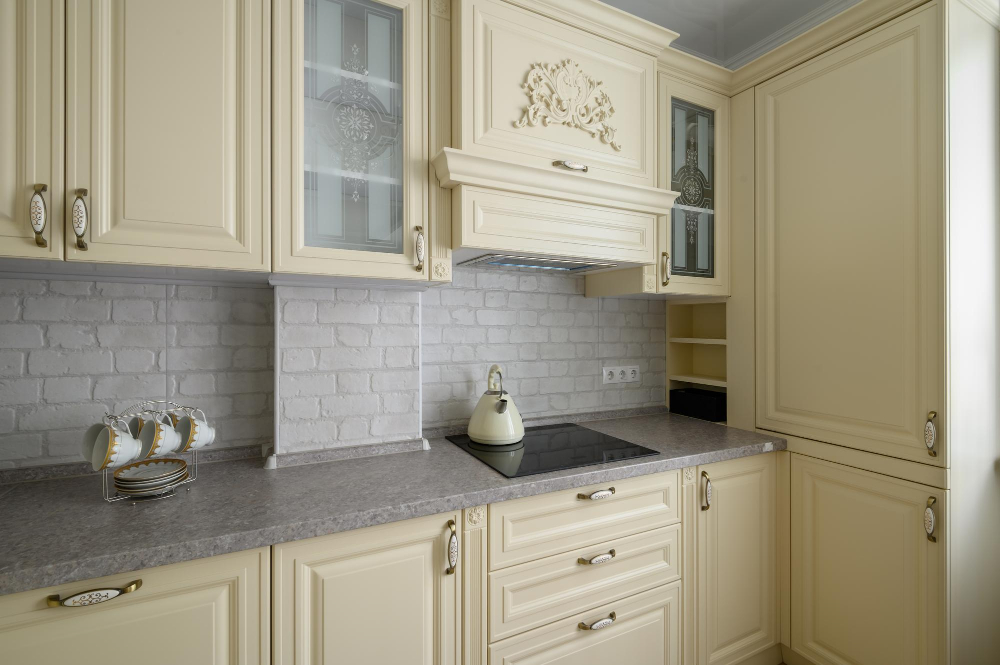
First and foremost, you want to make sure that the color complements your dark countertops. But beyond that, you also need to think about other elements in your kitchen such as flooring, backsplash tiles or wallpaper.
Another important factor is lighting. The amount of natural light in your kitchen can greatly affect how colors appear on surfaces throughout the day.
If you have a lot of natural light coming into your space, lighter shades may work well for creating an airy feel while darker hues can add depth and richness.
It’s also essential to take into account the size of your kitchen when selecting cabinet colors. Darker shades tend to make spaces look smaller while lighter tones create an illusion of more space.
Considering Kitchen Size
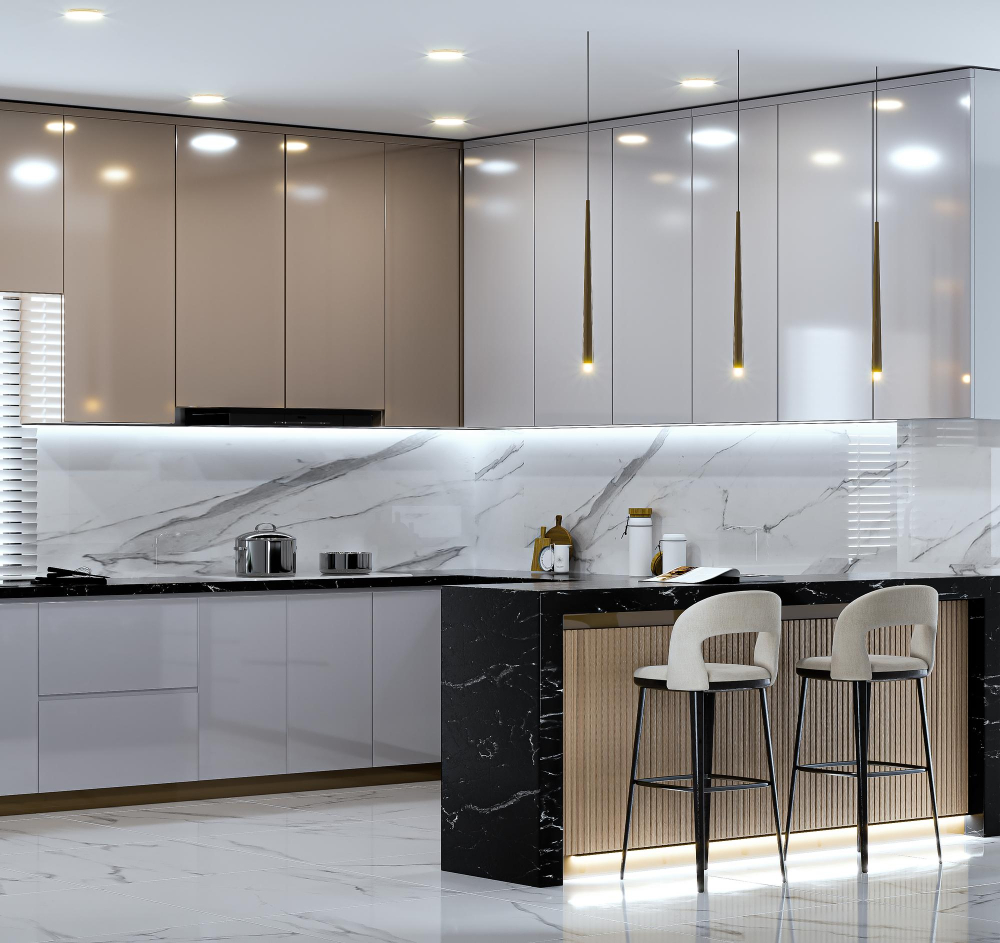
If you have a small kitchen, lighter colors can help create an illusion of more space and make it feel brighter and airier. On the other hand, if you have a larger kitchen with high ceilings or ample natural light, darker shades can add depth and richness to the room.
For smaller kitchens with dark countertops, white or off-white cabinets are always a safe bet as they reflect light well and create an open feeling in tight spaces. Light gray is another great option that adds sophistication without overwhelming smaller kitchens.
If your kitchen is on the larger side but lacks natural light sources such as windows or skylights, then painting your cabinets in warm tones like beige or cream will help bring warmth into space while still keeping things bright.
Lighting and Color
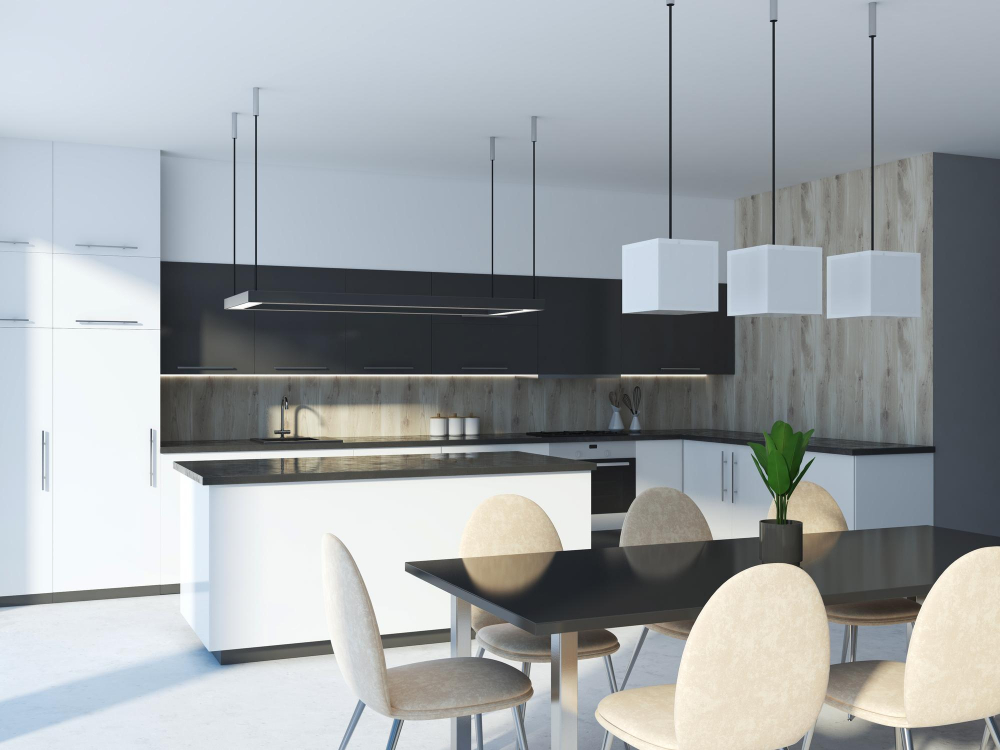
The lighting in your kitchen can significantly affect how colors appear, making it essential to test paint samples under different lighting conditions before making a final decision.
Natural light is ideal for showcasing true colors, so if you have large windows or skylights in your kitchen, take advantage of them. However, if natural light is limited or non-existent in your space, artificial lighting becomes even more critical.
Warm-toned bulbs tend to enhance warm-colored cabinets and make cool tones look duller. On the other hand, cool-toned bulbs will do the opposite – they’ll make warm hues look less vibrant while enhancing cooler shades.
Consider installing dimmer switches that allow you to adjust the brightness of lights as needed throughout different times of day and activities like cooking versus entertaining guests.
Coordinating With Other Elements
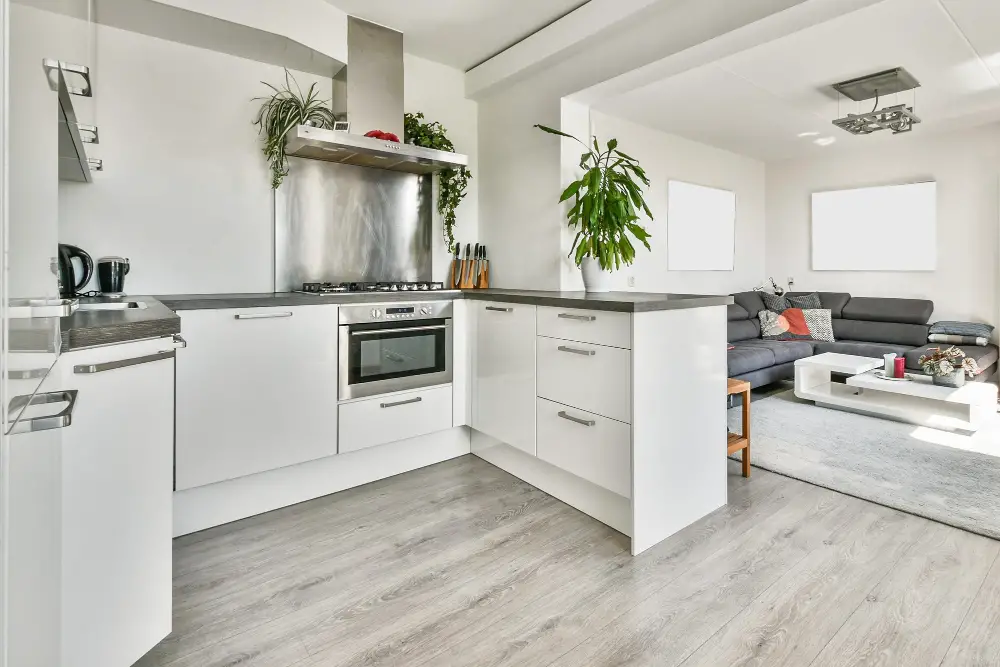
This includes flooring, backsplash tiles, appliances and even furniture. You want to create a cohesive look that ties everything together seamlessly.
One way to ensure coordination is by selecting colors from the same family or palette as your existing elements. For example, if you have stainless steel appliances and gray tile floors, opt for shades of gray or blue-gray for your cabinets.
Another option is to choose complementary colors that enhance each other without being too matchy-matchy. If you have warm-toned countertops like brown granite or wood grain laminate, try pairing them with cool-toned cabinet colors such as navy blue or forest green.
Finish and Material Considerations
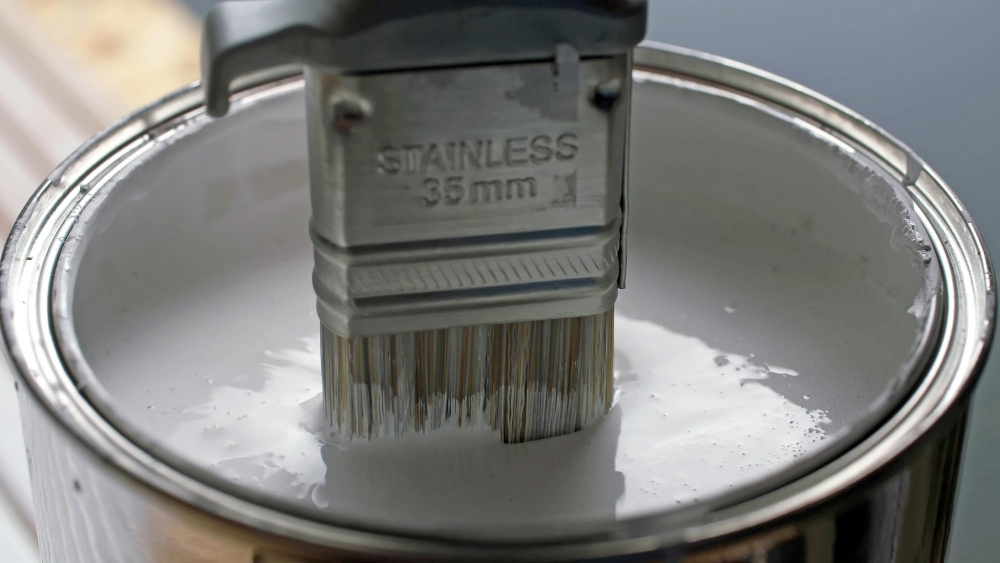
The type of finish you choose can affect how well the paint adheres and how durable it will be over time. For example, if you have wood cabinets with a glossy or semi-glossy finish, they may require more preparation before painting than matte-finished ones.
Similarly, different materials may require specific types of paint or primers for optimal results. For instance, metal cabinetry might need an oil-based primer before applying latex paint.
It’s also essential to think about what kind of look you want in your kitchen when choosing a cabinet material and finish. Do you prefer a sleek modern style? Then perhaps high-gloss finishes on acrylic or laminate surfaces would work best for your space.
If traditional is more up your alley then stained wood with satin finishes could be perfect.
Two-tone Cabinet Options
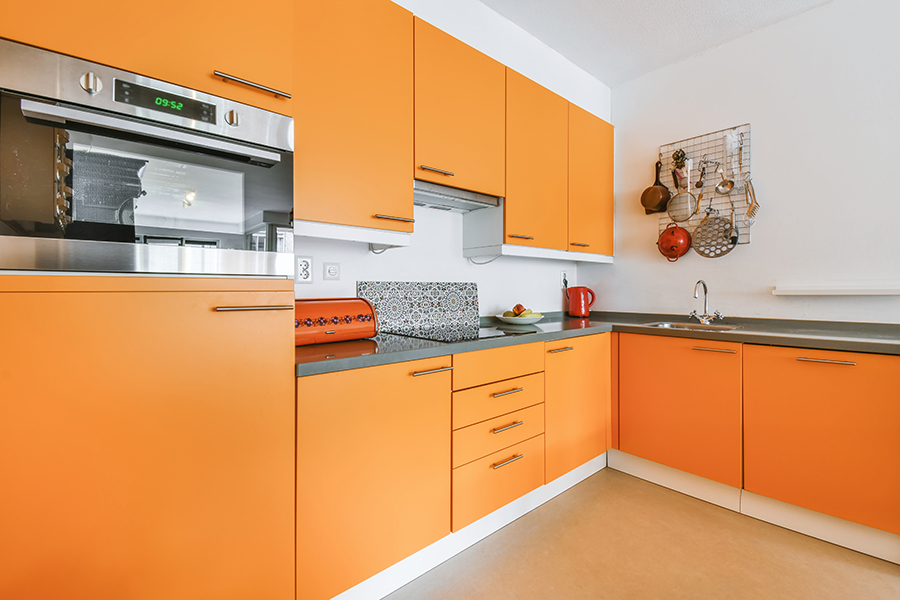
This trend involves painting the upper and lower cabinets in different colors to create contrast and visual interest. With dark countertops, you can choose a lighter color for the upper cabinets to balance out the space or go bold with a contrasting hue that complements your countertop’s undertones.
For example, if you have black granite countertops, try pairing them with white upper cabinets for an elegant look. Or if your dark counters have warm brown tones, consider painting your top cabinetry in light gray or blue-gray shades.
When choosing two-tone cabinet options with dark countertops, it’s essential to keep other elements of your kitchen in mind as well. Consider coordinating with flooring materials or backsplash tiles that complement both cabinet colors while still highlighting those beautiful counters.
Tips for Choosing Paint
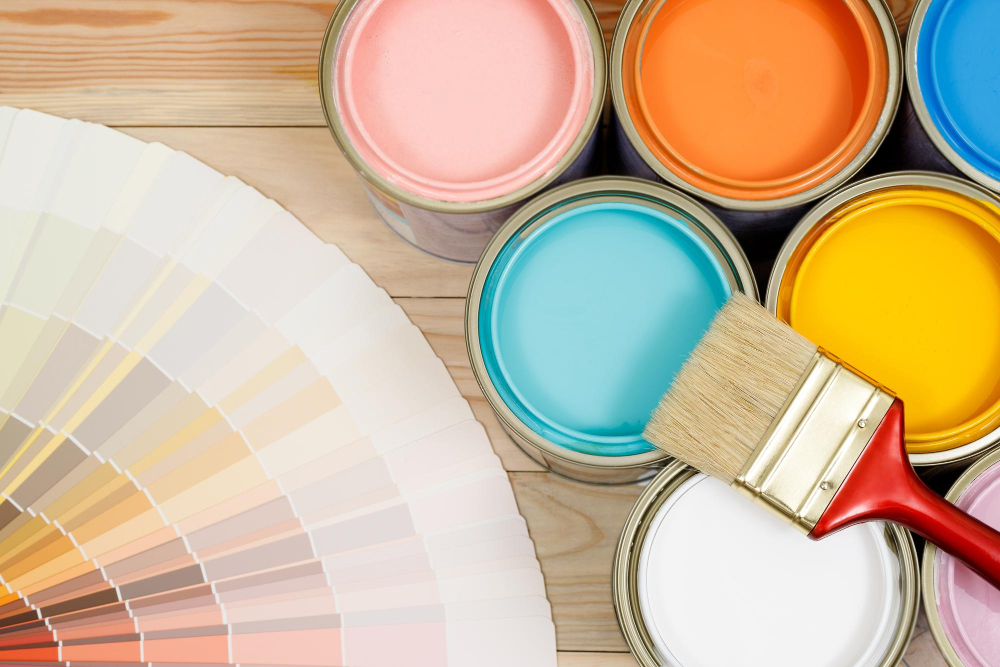
First and foremost, make sure to select a high-quality paint that is specifically designed for cabinets. This will ensure durability and longevity of the finish.
Next, consider using samples before committing to a color choice. Paint small sections of your cabinet doors or drawers with different colors and observe how they look at different times of day under various lighting conditions.
Another important tip is to take into account any other elements in your kitchen that may affect the overall look of the space when selecting cabinet colors. For example, if you have bold backsplash tiles or patterned flooring, choose neutral shades for your cabinets so as not to overwhelm the room.
Lastly, don’t be afraid to get creative! Two-tone cabinetry has become increasingly popular in recent years – try painting upper cabinets one color while leaving lower ones another shade altogether!
FAQ
Should cabinets be lighter or darker than countertops?
Cabinets should be lighter than countertops for a feeling of space, with lighter colors on the vertical cabinet spaces and darker colors on the horizontal countertop ones.
What color to paint kitchen cabinets with dark brown granite countertops?
With dark brown granite countertops, greige or beige colored paint for your kitchen cabinets would provide a warm and inviting contrast.
What are the best color combinations for kitchen cabinets and dark countertops to create a visually appealing space?
Some of the best color combinations for kitchen cabinets and dark countertops include white cabinets with black or dark gray countertops, light gray cabinets with dark granite countertops, and blue cabinets with dark marble countertops.
How can one incorporate color psychology when choosing paint colors for kitchen cabinets with dark countertops?
One can incorporate color psychology in choosing paint colors for kitchen cabinets with dark countertops by selecting contrasting colors that evoke positive emotions and complement the existing space, such as lighter shades, neutrals, or softer hues.
What are some examples of popular color schemes for kitchens featuring dark countertops and how can they be complemented by cabinet colors?
Some popular color schemes for kitchens with dark countertops include pairing them with neutral toned cabinets in white, beige or gray for a classic and clean look, or opting for contrasting cabinets in vibrant colors like red, blue, or green for a bold statement.
